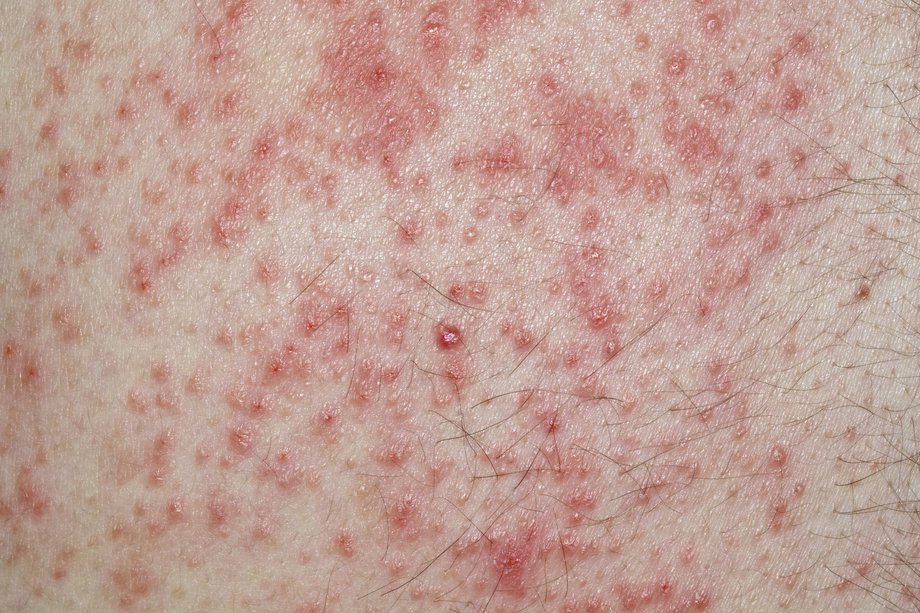OverviewContact dermatitis
Contact dermatitis is a type of eczema triggered by contact with a particular substance.
Eczema is the name for a group of conditions that cause skin to become dry and irritated.
Contact dermatitis usually improves or clears up completely if the substance causing the problem is identified and avoided. Treatments are also available to help ease the symptoms.
Symptoms of contact dermatitis
Contact dermatitis causes the skin to become red, blistered, dry and cracked.
This reaction usually occurs within a few hours or days of exposure to an irritant or allergen.
Symptoms can affect any part of the body but most commonly the hands and face.
Read about symptoms of contact dermatitis.

When to see your pharmacist
Speak to your pharmacist if your contact dermatitis is troubling you.
They can recommend treatments such as emollients (moisturisers), which you rub on your skin to stop it becoming dry.
When to see your GP
See your GP if you have persistent, recurrent or severe symptoms of contact dermatitis. They can try to identify the cause and suggest appropriate treatments.
Your GP may refer you to a doctor who specialises in treating skin conditions (dermatologist) for further tests if:
- the substance causing your contact dermatitis cannot be identified
- your symptoms are not responding to treatment
Read about diagnosing contact dermatitis.
Causes of contact dermatitis
Contact dermatitis can be caused by:
- an irritant – a substance that directly damages the outer layer of skin
- an allergen – a substance that causes the immune system to respond in a way that affects the skin
Contact dermatitis is most commonly caused by irritants such as soaps and detergents, solvents or regular contact with water.
Read about causes of contact dermatitis.
Treating contact dermatitis
If you can successfully avoid the irritants or allergens that trigger your symptoms, your skin will eventually clear up.
However, as this is not always possible, you may also be advised to use:
- emollients – moisturisers applied to the skin to stop it becoming dry
- topical corticosteroids – steroid ointments and creams applied to the skin to relieve severe symptoms
- oral corticosteroids – steroid tablets that can help relieve widespread symptoms
Read about treating contact dermatitis.
Preventing contact dermatitis
The best way to prevent contact dermatitis is to avoid contact with the allergens or irritants that cause your symptoms.
If you cannot avoid contact, you can take steps to reduce the risk of the allergens or irritants causing symptoms, including:
- cleaning your skin – if you come into contact with an allergen or irritant, rinse the affected skin with warm water and an emollient as soon as possible
- using gloves to protect your hands – but take them off every now and again, as sweating can make any symptoms worse; you may find it useful to wear cotton gloves underneath rubber gloves if the rubber also irritates you
- changing products that irritate your skin – check the ingredients on make-up or soap to make sure it does not contain any irritants or allergens; in some cases, you may need to contact the manufacturer or check online to get this information
- applying emollients frequently and in large amounts – these keep your skin hydrated and help protect it from allergens and irritants; you could also use emollient soap substitutes rather than regular bar or liquid soaps, which can dry out your skin
Other types of eczema
Other types of eczema include:
- atopic eczema (also called atopic dermatitis) – the most common type of eczema; it often runs in families and is linked to other conditions, such as asthma and hay fever
- discoid eczema – circular or oval patches of eczema on the skin
- varicose eczema – this most often affects the lower legs; it's caused by problems with the flow of blood through the leg veins